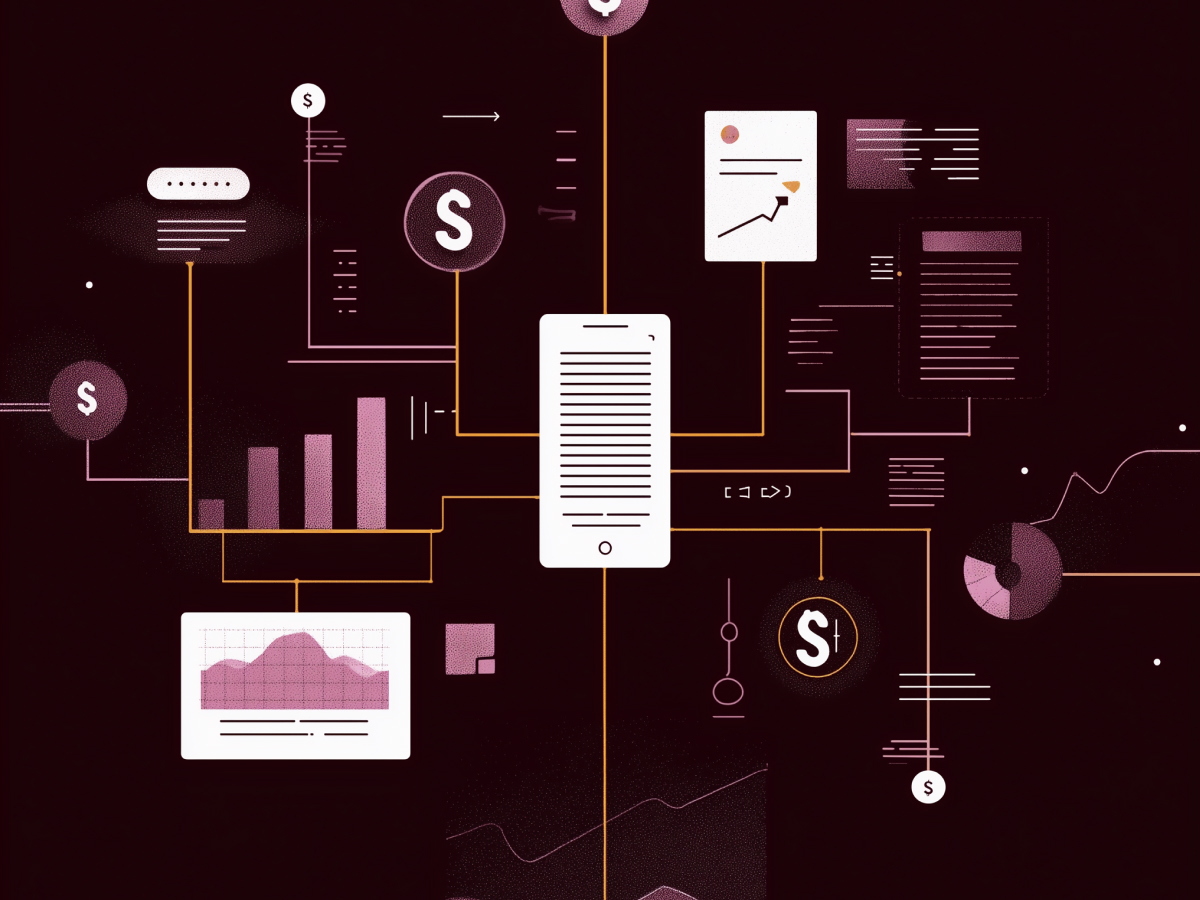High-quality inputs lead to better AI-assisted survey outputs
When using generative AI to design customer surveys, most people expect magic. What they get instead is a draft loaded with vague, surface-level insights. The real problem comes from what you’re feeding your AI.
If you give the model low-quality or generic source material, you’re going to get generic results back. On the other hand, when you provide well-curated, relevant input, like previous surveys from reputable sources such as Pew Research Center, or your company’s own customer data, the model can produce survey drafts that are sharper, more aligned, and ready for refinement. In my experience, giving the AI plenty of context also helps its output mimic your voice or the tone of your organization more reliably.
This is where executives need to pay attention. AI isn’t a brainstorming tool that fills a blank page with brilliance. It’s more like a systems amplifier. Feed it strong, high-signal content, and you’ll get structured, usable results. Skimp on the inputs, and you’re left spending extra hours correcting basic problems later on.
You don’t need to wait for some perfect AI to land in your lap. Start with inputs you already trust, like internal reports, past campaigns, or documented customer feedback. The quality’s in your ecosystem. Use it deliberately.
Precision in AI prompts mimics clarity in effective survey questions
Ask bad questions, and you get bad answers, from humans or AI.
A vague prompt like “write some survey questions about healthcare” gives you filler. But tell the model exactly what you want, something like “generate a single Likert-scale question about public trust in primary care physicians”, and the difference is immediate. The model has something to work with. It knows what tone to strike, what format to use, and the context behind the topic.
This is more than just prompt tuning. It’s about operational discipline. If your survey team doesn’t nail the objective early on, you end up wasting cycles iterating around an unclear goal. The same discipline that drives good strategy applies here: be clear, be specific, and align the prompt with the outcome you want.
C-suite leaders should be pushing their teams to develop the skill of “thinking in prompts.” This is directly tied to your organization’s ability to extract meaningful insights from data. The people who master prompt precision will outperform. They’ll outlearn and out-decide, faster.
Stop hoping that AI will just figure it out. Give it guardrails. Narrow the scope. Guide the output. Treat precision as alignment. That’s where the compounding value is.
Clearly defining the desired outcome improves AI output quality
Most people using generative AI for tasks like survey design underestimate a simple fact: the model doesn’t know what you want unless you tell it. If you only have a rough idea of what you’re aiming for, you’ll get unclear, often unusable results. That’s not the model’s fault, it’s following your lead.
When you define the end product clearly, what the survey should measure, how the responses should be structured, what tone or demographic it’s for, you automatically raise the floor on quality. But when you also tell the model what to avoid, like biased language or overly positive framing, you sharpen that output even further. This method of prompting by exclusion can be hugely effective. It forces the model to strip out assumptions and stick to utility.
For executive teams, this is less about writing instructions and more about tightening alignment across functions. A survey with vague goals carries risk. It misinforms stakeholders and wastes operational time. A survey shaped intentionally, by humans using AI with directive precision, delivers signal you can act on.
If you rely on AI to fill in the blanks, you’re trading speed for accuracy. If you define those blanks with intent, you’ll get speed and relevance. Leaders who make outcome clarity a team habit compound gains over time across every system dependent on smart decision loops.
Treat AI as a collaborative partner rather than a shortcut
Generative AI hits its stride when you stop expecting one-shot brilliance and start engaging it as part of an iterative process. This means treating its output as a first version, then adjusting, redirecting, and refining depending on what comes back.
One of the major advantages of using tools like ChatGPT or Claude is revision speed. You can course-correct instantly. If the first draft misses the tone, clarify your intent and re-prompt. If the layout’s wrong, instruct it differently. You’re not locked into static output, you’re guiding an adaptable system with real-time feedback. That makes creative revision highly efficient.
Some days these models feel responsive. Other days, less so. But over time, you’ll learn how they interpret instructions, what kind of follow-up gets results, and where they tend to fall short. That’s the learning curve. You train the tool while it helps train your thinking.
This is worth emphasizing at the executive level. AI only delivers high-leverage results when it’s used interactively. Teams that treat it as a shortcut will end up with surface-level work. Teams that build a habit of engaging it thoughtfully, just like they would with a junior analyst or a draft presentation, stand to benefit far more. Not just in output quality, but in speed, clarity, and repeatability.
Use AI selectively based on task suitability
AI is powerful, but it’s not universal. It performs well in certain types of work, especially tasks that require speed and structure, but gets clumsy when subtlety, originality, or human nuance are involved. Knowing what jobs to assign to AI, and what to keep human-led, makes the difference between using it efficiently and creating avoidable problems.
For example, if you need to cut a 200-word summary down to 150, AI is effective. It maintains meaning while removing redundancy. But if the job involves writing something that needs instinct, tone, or personal insight, like creating an executive abstract, AI tends to deliver generic, robotic text. You’ll spend more time fixing it than if you wrote it yourself.
This is about operational precision. Not everything needs high fidelity, and not everything benefits from delegation. If the use case is mechanical, repetitive, or time-sensitive, AI helps. Otherwise, use it cautiously.
Executives should encourage their teams to test these boundaries early. Let people experiment on low-risk outputs, then build internal guidelines based on actual results. Don’t rely on theory, use performance as the metric. This clarity saves time and prevents misalignment with market-facing materials or core deliverables.
Self-evaluation via AI provides initial feedback but requires human oversight
When you work with AI long enough, the content starts to blur. It becomes hard to tell which ideas came from the tool and which were yours. Having AI review or grade its own work can help get a fresh perspective, especially when you’re deep into a project and objectivity is limited. That said, you can’t trust it blindly.
AI tends to over-rate its own output. If it generates flawed content and then evaluates it, the risk is confirmation without correction. It can still be useful to prompt the model to review its work against a benchmark, like a gold-standard customer survey, but it’s just step one, not the final filter.
This is where executive leadership matters. You don’t need to approve every AI-generated sentence. But setting the expectation that AI-generated content must always pass a final human review, that’s a key safeguard. It ensures quality and maintains accountability.
Leverage AI for initial critiques and speed, but don’t assume it’s infallible. Treat its feedback as provisional. Human judgment finishes the work. That’s the standard that sustains credibility, especially in customer-facing or data-critical outputs.
Main highlights
- Prioritize quality inputs in AI processes: Leaders should ensure teams feed AI tools with high-quality, relevant materials, such as past survey data or credible research, to produce meaningful outputs and reduce rework.
- Drive prompt precision to improve results: Clarify the scope and specifics in AI prompts to avoid vague or misaligned outputs. This raises the quality of both AI responses and final survey designs.
- Set clear outcomes upfront: Executives should require teams to define both the desired results and potential pitfalls early, helping AI align more closely with business goals and avoid biased or unfocused deliverables.
- Use AI as an iterative partner: Treat AI as part of a back-and-forth work process, not a one-click solution. Encourage staff to engage with AI output actively, refining and redirecting based on initial drafts.
- Assign AI where it adds measurable value: Direct AI tools toward efficiency-focused tasks like trimming content or formatting. Reserve strategic or creative jobs for human ownership to maintain quality and tone.
- Require human oversight for AI reviews: While AI can assist in initial self-assessments, decision-makers should mandate human review to ensure final outputs meet quality benchmarks and reflect organizational standards.





